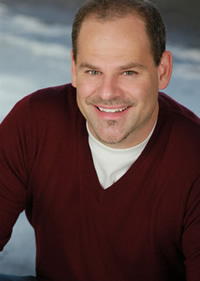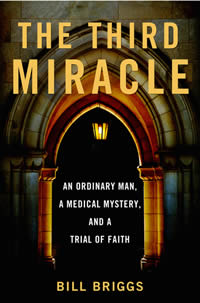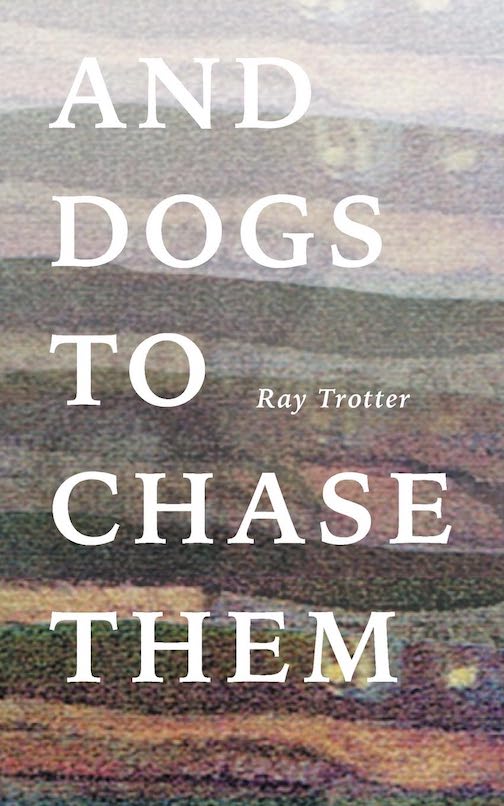Saint Pioneer Feminist
Journalist Bill Briggs traces the canonization of an unlikely miracle worker
On the face of it, The Third Miracle: An Ordinary Man, a Medical Mystery, and a Trial of Faith by journalist Bill Briggs is a chronicle of a century-old quest to have sainthood bestowed upon Mother Théodore, a nineteenth-century Roman Catholic nun who, along with five fellow sisters, established the idyllically named “Saint-Mary-of-the-Woods” settlement in Indiana. Briggs, a former Nashville Banner reporter now with MSNBC.com, has written a masterful page-turner, a book that serves as a testament to tenacious research, graceful prose, and a true journalist’s skeptical nature. By following the beatification of Mother Théodore, The Third Miracle uncovers the secret saint-making practices of the Catholic Church. Ultimately, of course, it is also about the age-old conflict between faith and science.
The narrative of the sisters’ struggle to turn a “rustic outpost” into a bricks-and-mortar convent extolling “a vision of Catholic activism and self-reliance” makes for captivating reading, but Briggs also assembles a rich and diverse cast of characters and shines a fierce light on an ancient canonization process that would seem to have no place in a twenty-first-century church. Briggs follows the case of Mother Théodore Guérin through the painstaking documentation of two miracles (at least as miracles are defined by the Catholic Church), innumerable doctors’ and patients’ testimonies, tribunal meetings, and, finally, an exhaustive trial. One might surmise that merely surviving the Vatican’s hoop-jumping requires a miracle.
 The Third Miracle also examines the historical collision between “human faith and human healing.” It was Hippocrates who ushered in a belief in the power of observation, arguing that “seeing is believing,” that observation should be “a physician’s primary tool.” For Hippocrates, superstitions and temperamental gods had no place in “modern” medicine. As Briggs notes, philosophers as diverse as Spinoza, Hume, and Kant argued that the rational laws of nature deemed the concept of miracles, well, irrational.
The Third Miracle also examines the historical collision between “human faith and human healing.” It was Hippocrates who ushered in a belief in the power of observation, arguing that “seeing is believing,” that observation should be “a physician’s primary tool.” For Hippocrates, superstitions and temperamental gods had no place in “modern” medicine. As Briggs notes, philosophers as diverse as Spinoza, Hume, and Kant argued that the rational laws of nature deemed the concept of miracles, well, irrational.
Briggs sets the narrative of the “crusade” to canonize Mother Théodore in motion with pastoral, yet disquieting, images: on a gray December day in 1907, as snow flurries caked the cluster of gravestones on the east side of the woods, workers slashed their shovels into the dry, dead grass. Finally they hoisted the body of Mother Théodore Guérin back to daylight—and onto the saint-making treadmill.
Mother Théodore was lucky, if luck has a place among the mystical and miraculous, to have two loyal and energetic advocates. The first was Mother Theodosia, who spent three years writing a biography of Mother Théodore, which was published in 1904. More importantly, Mother Theodosia herself provided the first proven miracle attributed to Théodore when she was cured of cancer through Mother Theodore’s intercession. The year was 1913; Mother Theodosia would live until 1943. Soon after that miracle, another nun, Sister Marie Kevin, embarked on “her life’s mission to secure Mother Théodore’s sainthood.”
Not all of the sisters in the order supported the intense pursuit of Mother Théodore’s canonization. They knew the quest would be costly, totaling perhaps a million dollars. Moreover, the sisters, beginning with Mother Théodore herself, had a long and fractious relationship with the Catholic Church’s entrenched male hierarchy. As independent as the frontier she had set her mind and hands to conquering, Mother Théodore was exiled from “the Woods” for insubordination; her church superior, Bishop La Hailandiére, assumed control himself over the thriving convent. Mother Théodore outlasted the bishop in grit and determination and was eventually reinstated.
 Feminism had found a stronghold in an unlikely place, and this independence carried through to subsequent generations of nuns. So did patience. “The sisters had waited ninety-four years for not one, but two proven miracles,” Briggs writes. Phil McCord would provide the second. A facilities worker at the sisters’ convent and a Baptist (apparently miracles don’t favor denominations), McCord began to suffer from cataracts. One day, he stopped by the chapel to say a prayer to Mother Théodore. Within days, his gray, cloudy vision had cleared—a new twist on the old medical maxim that “seeing is believing.”
Feminism had found a stronghold in an unlikely place, and this independence carried through to subsequent generations of nuns. So did patience. “The sisters had waited ninety-four years for not one, but two proven miracles,” Briggs writes. Phil McCord would provide the second. A facilities worker at the sisters’ convent and a Baptist (apparently miracles don’t favor denominations), McCord began to suffer from cataracts. One day, he stopped by the chapel to say a prayer to Mother Théodore. Within days, his gray, cloudy vision had cleared—a new twist on the old medical maxim that “seeing is believing.”
Saint-making was a cornerstone of Pope John Paul II’s papacy, and he brought about sweeping changes to the process: “He had considered the creation of saints a holy spark to rekindle the fire of Catholic devotion,” according to Briggs. And what a fire: before John Paul II, the Vatican canonized 302 saints between 1592 and 1978. During his tenure as pope, John Paul’s Vatican named 482 more.
John Paul would not live long enough to announce Mother Théodore’s canonization. That was left to his successor, Pope Benedict XVI. The eighth American saint was canonized on October 15, 2006. Marie Kevin, Mother Théodore’s greatest champion, was eighty-one years old. Amid the “human crush” of the faithful and devoted who flooded St. Peter’s Square, the bright banners and fluttering flags, the choruses of cheers and song, the splendor of the cardinals in red and the pope in green, the ninety-four year old crusade came to an end.
Briggs notes that the Vatican recently bestowed “beatification,” the first step in full-fledged sainthood, upon the much beloved Pope John Paul II himself, only six years after his death. As for what the third miracle might be in The Third Miracle: An Ordinary Man, a Medical Mystery, and a Trial of Faith, reader, I am no spoiler. But, believe me, you won’t be disappointed.
Bill Briggs will discuss The Third Miracle: An Ordinary Man, a Medical Mystery, and a Trial of Faith at the offices of McNeely Piggott & Fox, in Nashville, on February 1 at 5:30 p.m. The event is free and open to the public.


